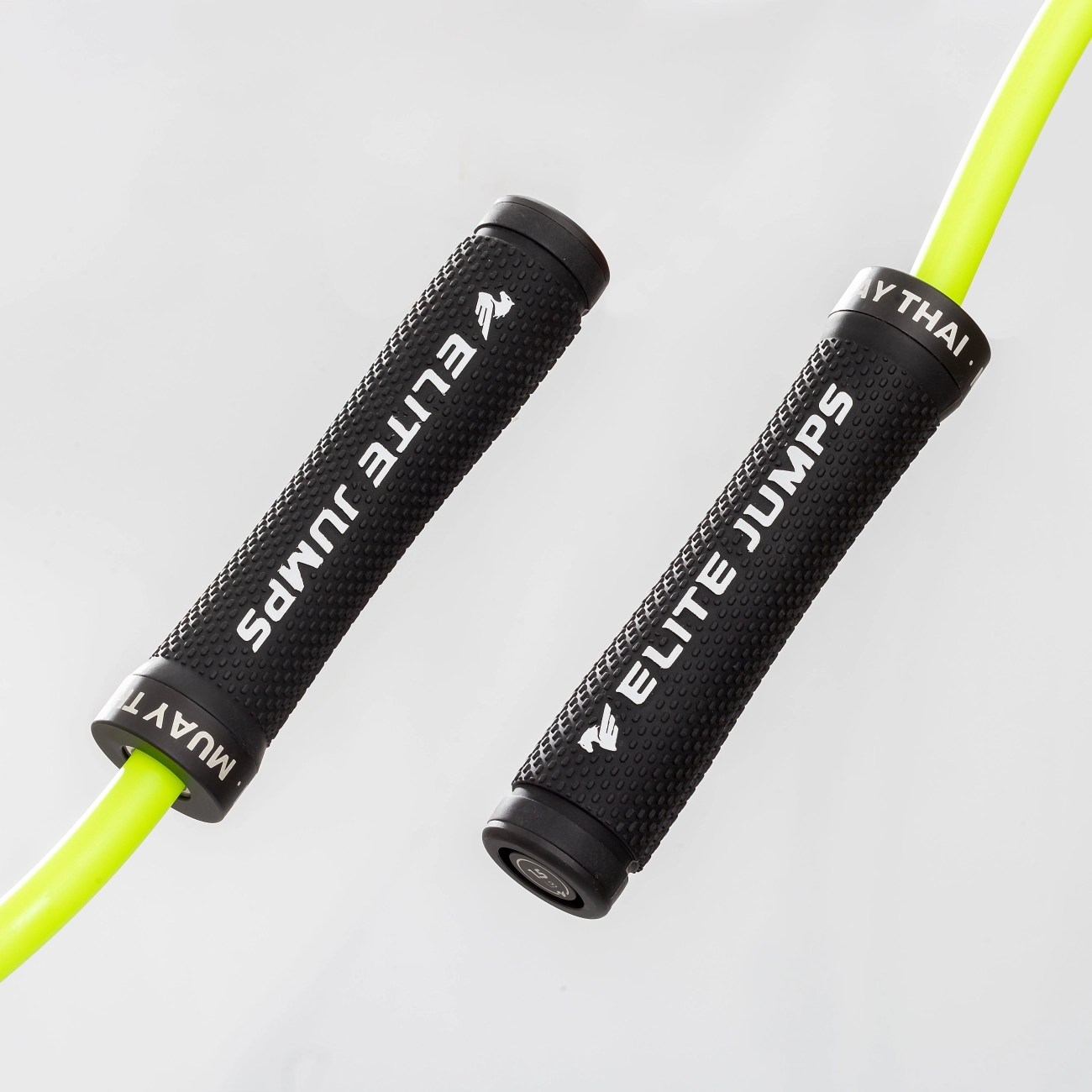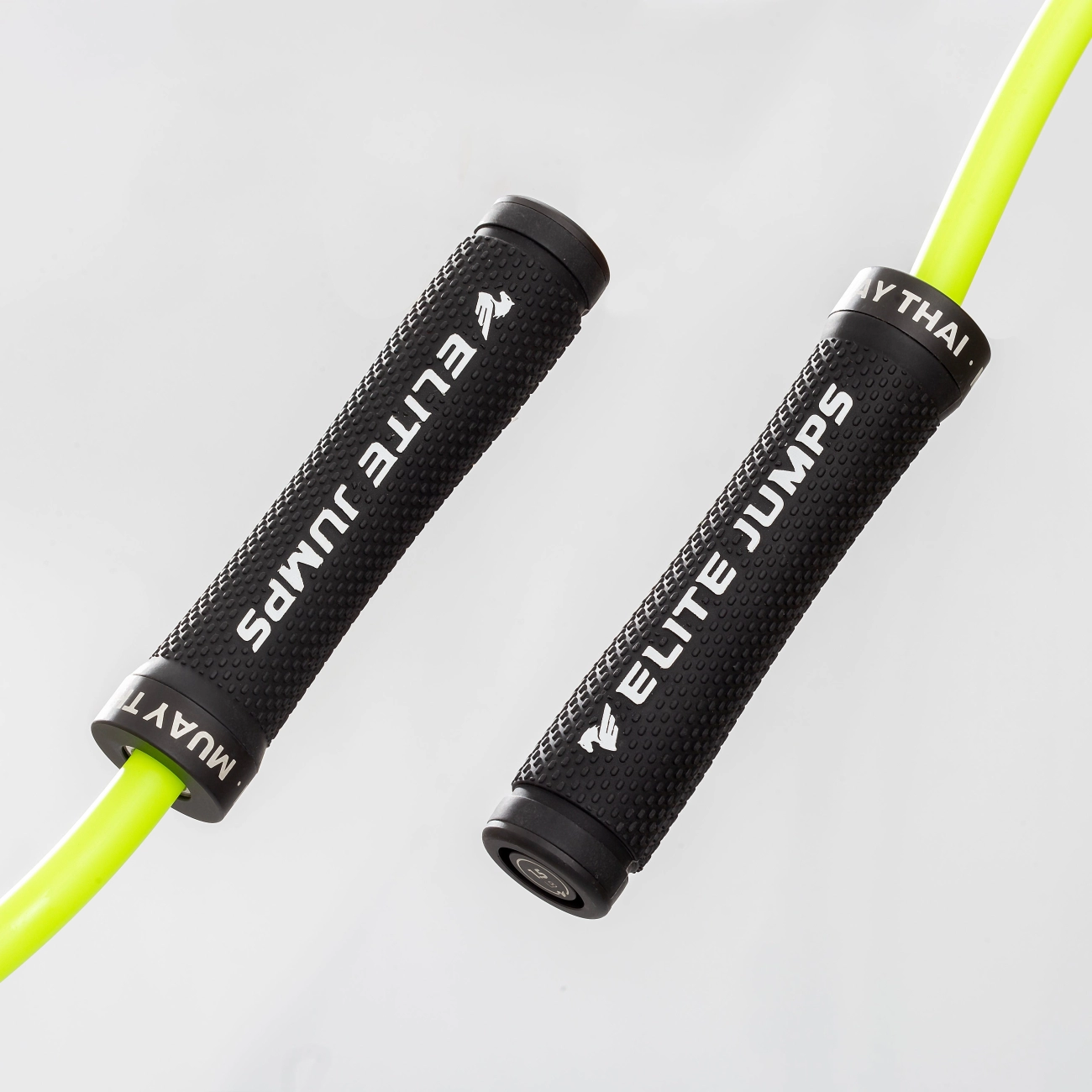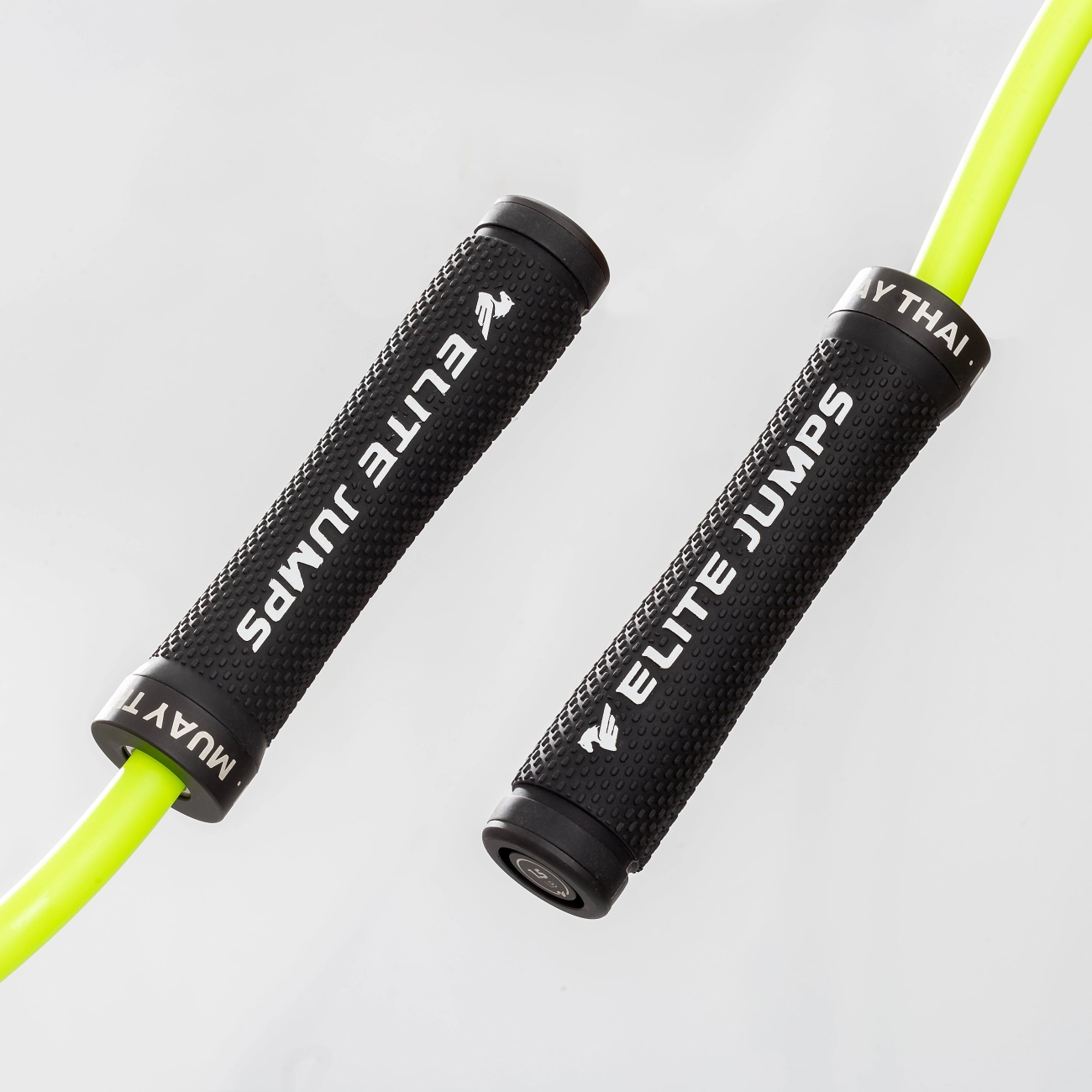What is a Jump Rope Replacement Cable
A jump rope replacement cable is a spare or substitute wire or cord designed to replace the original cable in your jump rope when it becomes worn out, damaged, or unsuitable for your workout needs. It is a critical component that directly affects the rope’s performance, speed, durability, and overall user experience.
Definition and Purpose of a Replacement Cable
The replacement cable serves as the main rotating part of the jump rope, allowing the handles to spin smoothly and the rope to rotate around your body efficiently. Over time, the original cable may fray, kink, or lose its tension due to regular use, making replacement essential. Installing a quality cable can restore the rope’s functionality, improve workout effectiveness, and extend the lifespan of your jump rope without having to buy a completely new one.
Components of a Jump Rope and Where the Cable Fits In
A typical jump rope consists of three main parts:
- Handles: These are the grips you hold that house the mechanisms allowing the rope to spin freely.
- Replacement Cable: The actual cord or wire connecting the two handles that spins when you jump.
- End Caps and Fasteners: These secure the cable inside the handles and allow for length adjustment.
The cable fits between the handles and serves as the contact point with the ground during use. Its material, thickness, and coating all impact the rope’s feel and performance, making the choice of a jump rope cable replacement key to tailoring your jump rope to your needs.
Understanding this connection is important when selecting a jump rope spare cable, whether you want a speed jump rope cable for fast rotations or a heavier cable for strength workouts. The cable works in tandem with the handles and fasteners to deliver a smooth, controlled jump rope experience.
For tips on measuring the perfect length for your jump rope cable, check out our jump rope cable length guide to ensure an ideal fit.
Why Replace Your Jump Rope Replacement Cable

Over time, your jump rope cable takes a beating from regular workouts, impact, and constant friction. Knowing when to replace your jump rope replacement cable is key to maintaining performance and safety.
Common Signs You Need a Replacement Cable
Look out for these signs that indicate your jump rope cable needs swapping out:
- Fraying or visible wear: When you spot strands unraveling or the outer coating wearing off, it’s time for a new cable.
- Kinks and bends: A kinked or misshapen cable won’t spin smoothly, affecting your rhythm and workout quality.
- Rust or corrosion (for steel cables): This reduces durability and can cause the cable to snap unexpectedly.
- Inconsistent speed or drag: If your cable feels heavier or sluggish compared to before, it may have lost its coating or tension.
- Broken or damaged end caps: These can cause improper cable tension and create safety hazards.
Benefits of Replacing the Cable
Replacing your jump rope spare cable regularly keeps your jump rope workout efficient and enjoyable. Here’s why it’s worth it:
- Restores smooth rotation and speed: A fresh cable spins better, perfect for skills like speed jumping or double unders.
- Improves workout safety: Prevents unexpected snaps or trip hazards caused by damaged cables.
- Extends overall jump rope life: Keeping the cable in good shape reduces wear on handles and bearings.
- Enhances workout quality: Lightweight and well-maintained cables let you focus on technique without interruptions.
- Customizable experience: Replacing the cable lets you choose materials and lengths that better fit your training goals.
Regularly checking and replacing your jump rope wire replacement helps you get the most from your fitness routine while avoiding the frustration of a failing cable mid-workout. For more details on choosing the right cable and length, check out our jump rope cable length guide.
Types of Jump Rope Replacement Cables
Choosing the right jump rope replacement cable depends largely on your workout style, speed goals, and handle type. Let’s break down the common types of cables you’ll find and what sets each apart.
PVC Jump Rope Replacement Cables
PVC cables are a popular choice for everyday fitness and beginners because they’re lightweight and smooth.
- Features: Flexible, coated with a thin layer of PVC for durability and less wear on the floor.
- Advantages: Affordable, less likely to snag or kink, and easy to control.
- Typical Use Cases: Great for general fitness, beginners, or moderate-speed jump roping. Ideal for use on carpet or smooth gym floors.
- Other Notes: The PVC coating helps protect the inner wire (if present) and extends cable life.
Steel Wire Jump Rope Replacement Cables
If you’re after speed and serious durability, steel wire cables stand out.
- Durability: Extremely tough and resistant to breaking during intense sessions.
- Speed: Thinner and heavier than PVC, making them ideal for fast jumps like double unders.
- Coating Options: Usually coated with PVC or nylon to reduce skin irritation and protect the wire from rust.
- Typical Use Cases: Perfect for competitive jump ropers, CrossFit athletes, and speed workouts.
Other Materials Cotton Nylon and Specialty Cables
There are also cables made from cotton, nylon, or other specialty materials suited for specific workouts or preferences.
- Cotton Cables: Soft and flexible, usually found in beaded or weighted ropes. Best for beginners or casual users.
- Nylon Cables: Lightweight and smooth but less durable than steel or PVC. Good for low-impact or skill work.
- Specialty Cables: These could be weighted cables or braided blends aimed at strength or endurance training.
Comparison Table of Cable Types
| Cable Type | Weight | Durability | Speed Potential | Best For | Coating |
|---|---|---|---|---|---|
| PVC | Light | Moderate | Moderate | Beginners, general fitness | PVC coated |
| Steel Wire | Medium to Heavy | High | High | Speed training, double unders | PVC or Nylon coated |
| Cotton | Light | Low | Low | Casual use, beginner | None |
| Nylon | Light | Low to moderate | Moderate | Skill & light workouts | Nylon coated |
| Specialty | Varies | Varies | Varies | Weighted or endurance | Depends on cable type |
Knowing these differences helps you pick a jump rope cable replacement that matches your workout routine, handle compatibility, and skill level. Whether you want speed, durability, or flexibility, there’s a cable type for you.
How to Choose the Right Jump Rope Replacement Cable
Picking the right jump rope replacement cable isn’t just about finding a spare wire—it directly impacts your workout and rope performance. Here’s what you need to consider to get the perfect fit.
Key Factors to Consider for Your Replacement Cable
-
Length
The cable length should match your height and jumping style. Too long, and you trip; too short, and your movement feels cramped. Use a jump rope cable length guide to find the ideal size. Generally, taller users need longer cables.
-
Thickness
Cable thickness affects speed and durability. Thinner cables (around 0.06 inches) are faster and better for speed jump rope workouts like double unders. Thicker cables offer more durability but may slow you down a bit.
-
Material
There are PVC cables, steel wire cables, and other options like nylon or cotton blends.
- PVC cables are smooth and flexible, great for beginners and fitness routines.
- Steel cables are heavier and more durable, ideal for advanced speed and performance.
- Cotton or nylon cables suit casual users or those wanting less bounce.
-
Coated vs. Uncoated
Coated cables (PVC-coated or nylon-coated) last longer and reduce rope tangling. Uncoated steel cables might be cheaper but can kink or fray faster.
Matching Cable Type to Your Jump Rope Handles and Workout
- Confirm your handles fit the replacement cable you choose, especially with adjustable jump rope cables. Some handles only support specific cable thicknesses or connection types.
- Consider your workout goals:
- For speed and competitive training, go with a steel cable jump rope replacement that’s thin and coated.
- For general fitness or cardio, a PVC coated jump rope cable offers a good balance of longevity and smooth rotation.
Tips for Choosing Weight and Length Based on User Profile
- Weight: Heavier cables give more feedback but can tire out beginners. Lightweight cables are easier to handle if you focus on speed or longer workouts.
- Length:
- Under 5’3”: 8 to 8.5 feet
- 5’4” to 5’8”: 9 feet
- Over 5’9”: 9.5 to 10 feet
- Always measure your jump rope length based on your height and style, and adjust if you prefer longer swings or faster rotations.
Choosing the right cable means balancing these factors with your jump rope handles and workout style. A matched setup ensures smoother swings, fewer snags, and better performance during every workout.
Step by Step Guide to Installing Your Jump Rope Replacement Cable

Replacing your jump rope cable is simple when you know the right steps. Here’s a clear guide to help you swap out your old cable for a new jump rope replacement cable, whether it’s a PVC, steel wire, or specialty cable.
Tools Needed for Jump Rope Cable Replacement
Before starting, gather these basics:
- Small screwdriver (flathead or Phillips, depending on your handles)
- Cable cutters or wire snips (for trimming excess cable)
- Pliers (helpful for securing ends)
- Allen wrench (some adjustable jump rope handles require one)
- Measuring tape (to set the right cable length)
Having these tools handy makes the process smooth and safe.
Removing the Old Jump Rope Cable Safely
- Loosen handle screws or end caps. Most jump rope handles have small screws or caps securing the cable. Use your screwdriver or Allen wrench to gently loosen these.
- Slide out the old cable. Carefully pull the old cable free, keeping an eye on any small parts like washers or clips. Keep them safe for reassembly.
- Inspect handles. Look for any damage or dirt inside handles; cleaning here can improve new cable performance.
Attaching the New Jump Rope Replacement Cable
- Measure and cut the cable. Use your measuring tape to match the length you want — generally, standing on the middle of the rope, handles should reach your armpits. Cut a few inches extra to leave room for adjustment.
- Insert the cable into the handle. Push the end of the replacement cable into the handle or through the wheel system, depending on your rope model.
- Secure the cable. Use screws, clamps, or locking mechanisms that come with your rope. For steel wire or coated cables, ensure the end caps are firmly crimped or screwed on to prevent fraying or slipping.
- Make product-specific adjustments. Some ropes have tension springs or adjustable bolts—adjust tension as needed to your preferred feel.
Adjusting Length and Securing End Caps
- Trim excess cable only after confirming the right length—too short and you’ll need a new cable again.
- Double-check end caps are snug and secure; loose caps can cause cables to unravel or handles to loosen during use.
- Test the rope by spinning it a few times before your workout to make sure it moves smoothly.
Following these steps ensures your new jump rope cable replacement fits perfectly and lasts longer, keeping your workouts consistent and hassle-free.
Maintenance Tips to Extend the Life of Your Jump Rope Replacement Cable

Taking good care of your jump rope replacement cable helps you get the most out of your investment and keeps your workouts smooth. Here are some practical tips for maintenance, covering storage, cleaning, and regular checks.
Proper Storage Recommendations
Storing your jump rope spare cable correctly prevents unnecessary wear and damage. Keep these points in mind:
- Avoid sharp bends or kinks by hanging your jump rope or loosely coiling it after use.
- Store the rope in a cool, dry place away from direct sunlight to protect the PVC coating or steel cable from degradation.
- Avoid placing heavy items on top of the jump rope cable — pressure can deform or weaken it over time.
- If your rope is adjustable, loosen it slightly before storage to reduce tension on the cable and connectors.
Cleaning Your Jump Rope Cable
Dirt and sweat buildup can wear out the coating and affect performance. Here’s how to clean it safely:
- Wipe the cable with a damp cloth after each workout to remove surface grime.
- For PVC or coated cables, use a mild soap solution, then rinse and dry thoroughly.
- Avoid harsh chemicals or abrasive materials that can strip protective coatings or cause corrosion, especially on steel cable jump rope replacements.
- Allow the cable to dry completely before storing to prevent mold or rust.
Regular Inspection for Wear and Tear
Checking your jump rope wire replacement regularly helps catch issues early and avoid breaks mid-workout:
- Look for signs of fraying, cracks, or exposed wire on both PVC and steel cables.
- Inspect connectors and end caps for looseness or damage.
- Replace the cable immediately if you see any wear that could lead to snapping or inconsistent performance.
- Keep an eye on coating wear — thinner areas can affect rope speed and control, important if you’re using speed jump rope cables for workouts like double unders.
By following these simple maintenance steps, you can extend the life of your replacement cable and keep your jump rope working like new. Regular care means safer, smoother skipping and better workout results.
Why Choose PVCJumpRopecom for Your Jump Rope Replacement Cable Needs
When it comes to jump rope cable replacement, PVCJumpRopecom stands out as a reliable choice for fitness enthusiasts across the United States. Here’s why:
Superior Quality PVC Cables
PVCJumpRopecom specializes in high-quality PVC coated jump rope cables that are designed to last. Their cables feature:
- Smooth coatings that reduce friction for faster, smoother rotations
- Durable materials resistant to fraying and wear, perfect for daily workouts or speed training
- Consistent thickness and strength that support both beginners and advanced jumpers
This focus on quality ensures your jump rope performs well whether you’re doing cross-training, double unders, or endurance jumping.
Custom Sizing and Durable Design
Not every workout is the same, and neither should be your cable length. PVCJumpRopecom offers:
- Custom length options so you get the perfect cable length based on your height and jump style
- Various thickness options to match your speed and control needs
- Cables built to withstand frequent use without compromising flexibility or speed
This attention to detail means your replacement cable fits your jump rope handles smoothly and meets your workout goals head-on.
Trusted Customer Experiences and Satisfaction Guarantee
Many users across the U.S. choose PVCJumpRopecom because they deliver on their promises:
- Positive customer testimonials highlight long-lasting cables and responsive customer service
- A satisfaction guarantee ensures you get a product that matches your expectations or you get support to make it right
This trust factor is crucial when investing in spare jump rope cables that you want to depend on for daily fitness.
Easy Online Ordering and Swift Shipping
Time is valuable, and PVCJumpRopecom makes replacing your jump rope spare cable hassle-free with:
- A user-friendly website that simplifies choosing and customizing your cable
- Clear guides on selecting the right jump rope cable length and type
- Fast and reliable shipping across the United States so you’re back to your workout in no time
You don’t have to wait weeks to get your jump rope wire replacement—PVCJumpRopecom is geared toward speed and convenience.
Choosing PVCJumpRopecom means getting a combination of quality, customization, and customer care, designed specifically for jump rope users in the U.S. Whether you need a quick fix or a performance upgrade, their replacement cables are built to help you jump better and longer.
Jump Rope Replacement Cable FAQs
Can I use any replacement cable for my jump rope
Not all replacement cables fit every jump rope. It’s important to match the cable type, thickness, and length to your specific jump rope handle. Using the wrong cable can cause poor performance or even damage your handles. For example, steel wire jump rope replacements usually require compatible swivels, while PVC spare cables fit most standard speed ropes. Always check compatibility before buying to ensure a smooth workout.
How often should I replace my jump rope cable
The replacement frequency depends on how often and intensely you jump. Typical signs you need a new jump rope cable include:
- Fraying or visible wire strands on steel cables
- Cracks or stiffness on PVC cables
- Uneven spinning or tangling
If you train multiple times a week, you might replace your cable every 3-6 months. Casual users may only need a replacement once a year. Regular inspection is key to preventing breaks mid-workout.
What is the best cable for double unders
Steel wire cables with a PVC coating are generally the best choice for double unders. They offer:
- High speed and smooth rotation
- Durability under fast, repeated use
- Less air resistance for quicker spins
Many advanced jumpers prefer a thinner steel cable around 0.045 to 0.065 inches for easier double unders. PVC coated cables protect the wire and increase longevity without adding weight.
Are PVC cables better than steel cables
It depends on your workout needs:
- PVC cables are flexible, quiet, and great for beginners or casual jumpers. They work well on most surfaces and offer an affordable, reliable option.
- Steel cables are tougher, faster, and preferred for serious fitness routines or speed jumping. The PVC coating on steel cables prevents rust and reduces wear.
If you want durability and speed, steel is the way to go. If you want versatility and comfort, PVC might be better. Many users keep both on hand to switch depending on their workout.
Choosing the right jump rope replacement cable is all about matching it to your jump style, handle, and goals. Regularly checking your cable’s condition and replacing it on time keeps your sessions safe, smooth, and effective.



